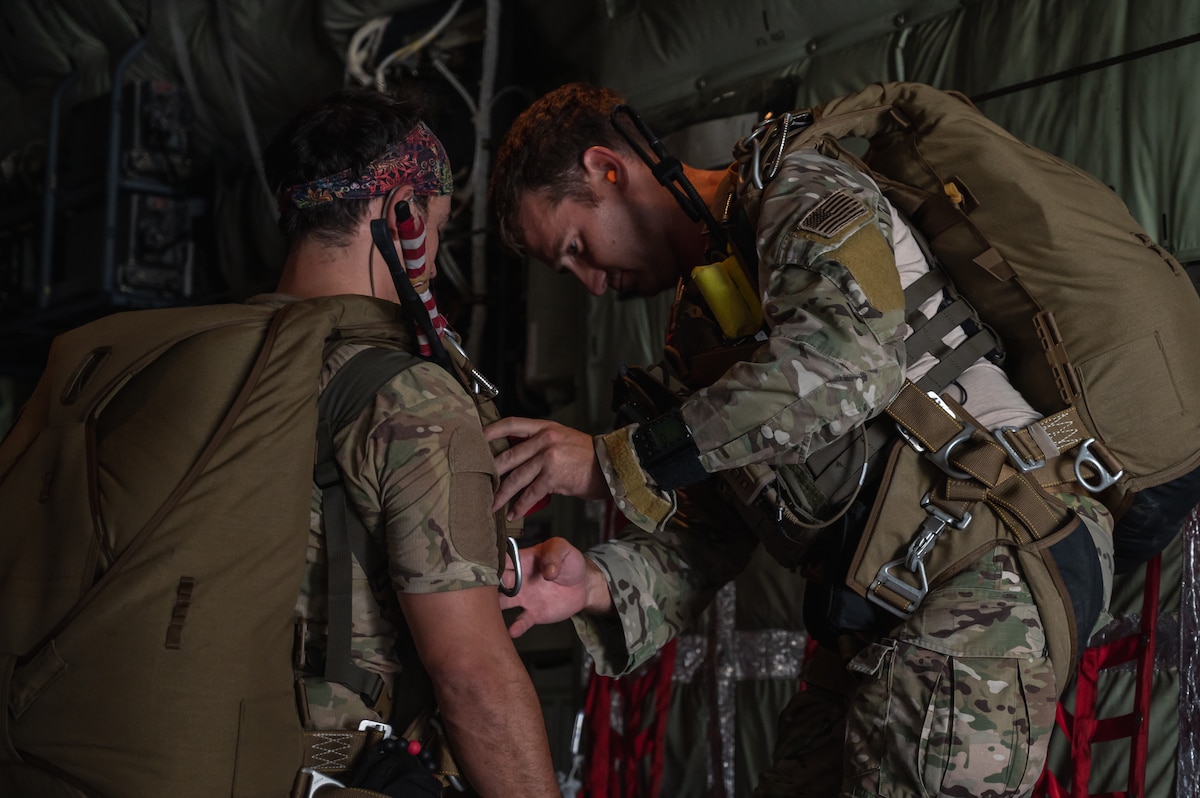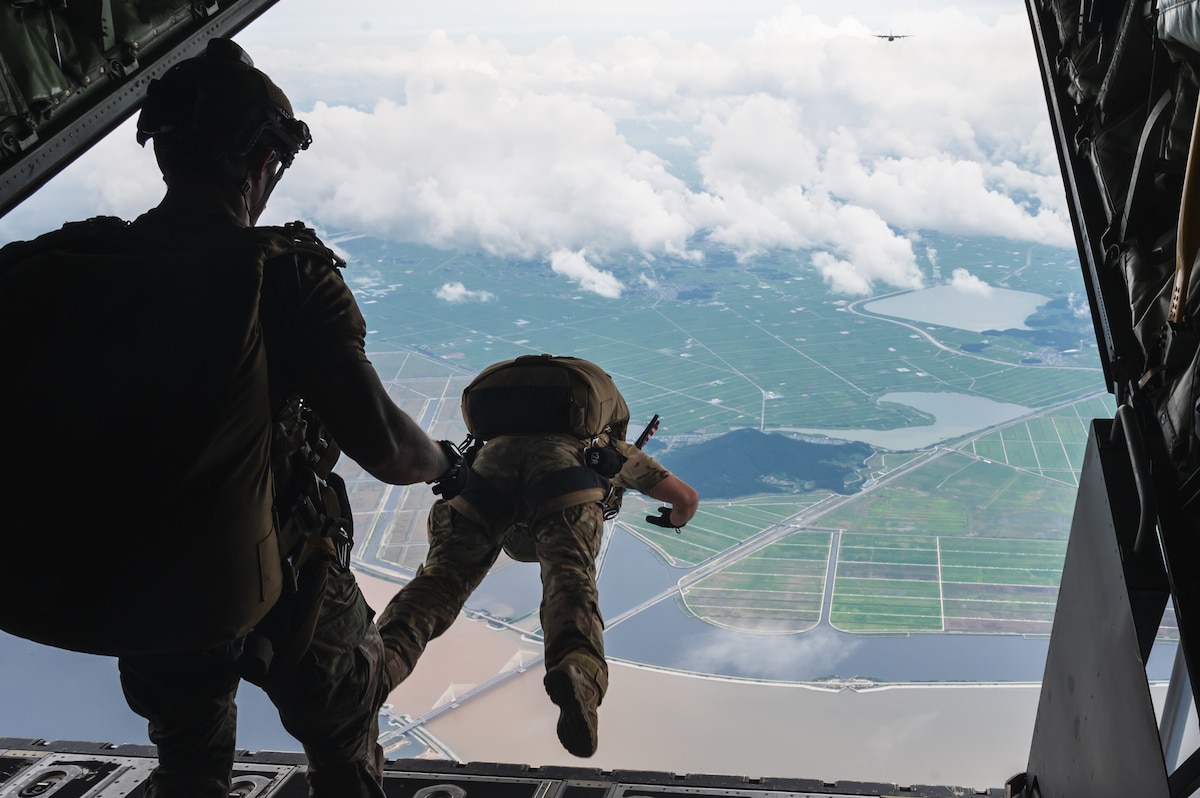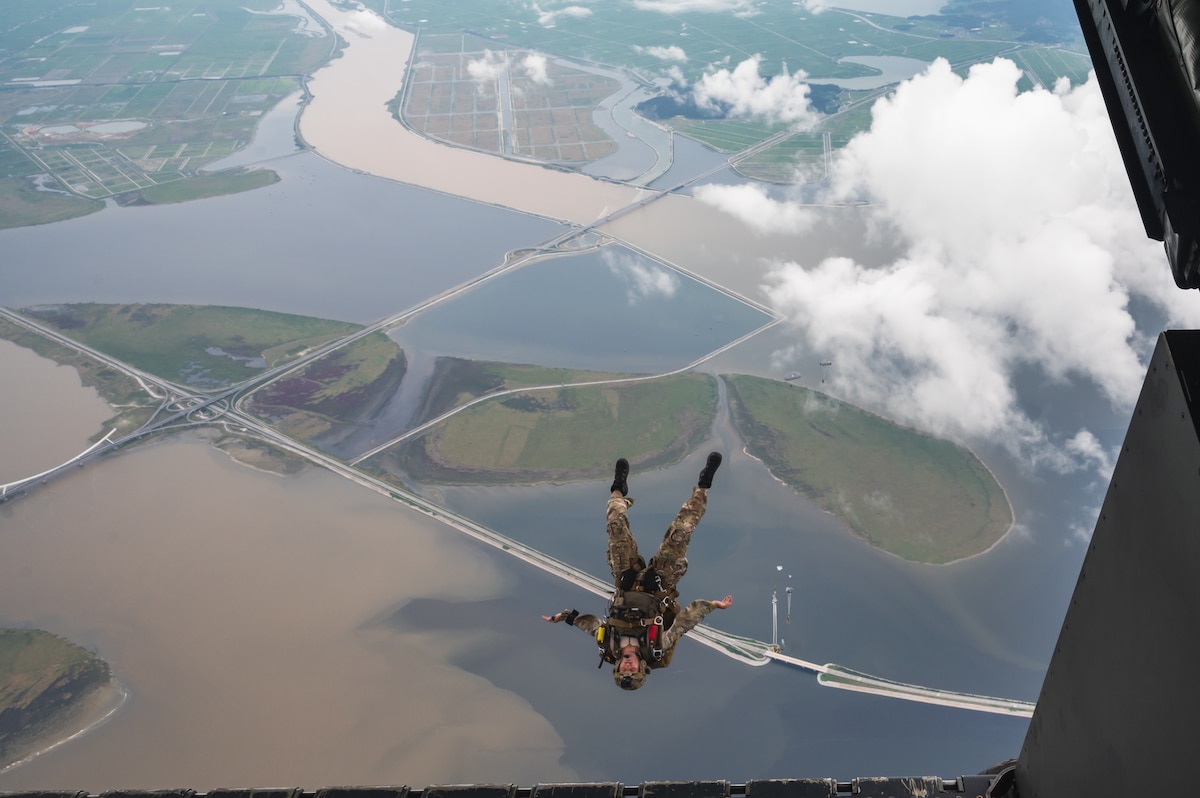South Korea's summers are famous for cloudy skies and torrential downpours that may appear at a moment's notice. However, during a week in mid-July, members of the Wolf Pack at Kunsan Air Base observed a spectacle precipitate from the open skies unlike the typical monsoon rains.
Spectators throughout the installation could spot paratroopers descending from the sky onto a drop zone near the base's alternate landing area, delivered by a U.S. MC-130J Commando II and a Republic of Korea air force MC-130K Hercules flying in formation together.
The nearly three-week, multinational training called Joint Combined Exchange Training, was hosted by the Special Operations Command Korea from July 15-31.
The goal of the training was to ensure interoperability with coalition special operations forces partners in realistic training environments. To do this, mission organizers created challenging scenarios in different domains to replicate adversarial tactics in combat scenarios.
"Joint Combined Exchange Training is where USAF SOF train alongside our ROK SOF counterparts to rehearse mission essential tasks while enhancing our lethality," said U.S. Air Force Capt. Raymond Lessig, 320th Special Tactics Squadron drop zone controller and mission commander. "The training provided opportunities for U.S. and ROK SOF to work through language barriers, exchange tactics techniques and procedures, and gain a better understanding of our collective strengths and weaknesses so that we can better leverage each other's capabilities during real-world contingency operations."
As the only theater special operations command in which the U.S. and host-nation SOF are institutionally organized for combined operations, SOCKOR and aligned units regularly train with their counterparts in the ROK army special warfare command, air mobility and reconnaissance command, naval special warfare flotilla command, and other units.
To successfully accomplish the training, planners relied heavily on the coordination between the 8th Fighter Wing, SOCKOR, the 353rd Special Operations Wing, ROK AMRC, and the 51st Fighter Wing at Osan Air Base. Each unit played a complementary role in achieving desired training objectives. Throughout the second week, participants utilized Kunsan AB to conduct the jump training portion of the JCET.
"This is the fourth year we've conducted this training at Kunsan," Lessig said. "We keep choosing to come back because of how accommodating and helpful the Wolf Pack has been. Each aspect of Kunsan from airfield management to the medical group have been ready to support our team execute this high-value training."
The ability to accept follow-on forces is one of the key tenets of the Wolf Pack's core mission and was on full display during the weeklong training on Kunsan AB. According to U.S. Air Force Col. Peter Kasarskis, 8th Fighter Wing commander, this is what makes Kunsan such a crucial asset in optimizing U.S. Forces Korea's agility and ability to project airpower throughout Asia.
"Kunsan exemplifies readiness in the Indo-Pacific," Kasarskis said. "Our Airmen here at the Wolf Pack demonstrate daily what it means to be forward-deployed and ready to fight tonight. Supporting training, like the JCET, highlights our ability to rapidly receive follow-on missions and integrate with allies and partners. Kunsan is more than just a fighter base; it's an agile power projection platform ready for any mission."
Lessig said Kunsan's location also made the difference in ensuring this iteration of the training was as representative of potential real-world scenarios as possible.
"Kunsan's location is invaluable to creating realistic training conditions," Lessig said. "Its location, surrounding environment and mission set, forces participants to plan and rehearse airborne operations far from their desired landing area, potentially at night and in adverse weather conditions, and to safely navigate as a team with all combat equipment to their objective."
As this portion of the JCET ends, the event showcased the military partnership between the U.S. and ROK forces, serving as a powerful reminder of their unwavering commitment to regional security. However, for some, this event was more than just a testament to their strength; it was a once-in-a-lifetime opportunity to witness the seamless interoperability of two of the world's most formidable military forces.









